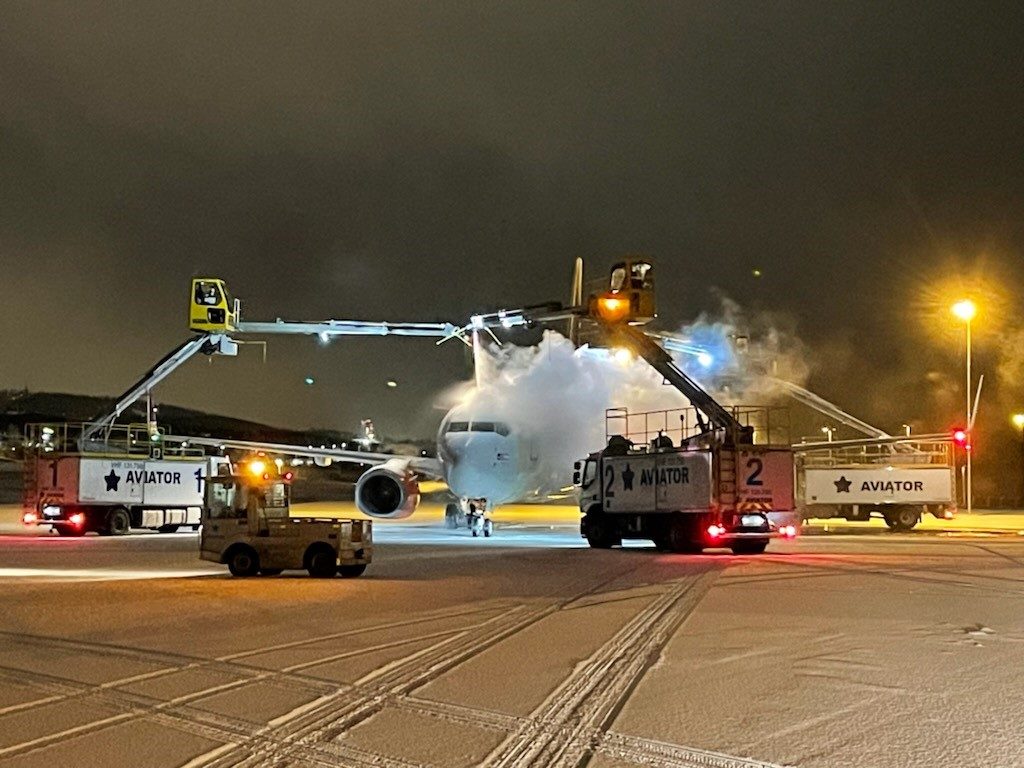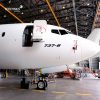 Aviation is undeniably an exciting industry, yet people working in it know how challenging and precise the field is. One of the main areas always on everyone’s minds is safety. Ensuring the safety of operations, procedures, staff, and passengers is the most important task for everyone involved and at any time of the year. While some tasks are always quite similar, others are very seasonal. Aviator Airport Alliance, a full-range provider of aviation services at 15 airports across the Nordics and a family member of Avia Solutions Group, what challenges they face during winter seasons and how they ensure safety and security.
Aviation is undeniably an exciting industry, yet people working in it know how challenging and precise the field is. One of the main areas always on everyone’s minds is safety. Ensuring the safety of operations, procedures, staff, and passengers is the most important task for everyone involved and at any time of the year. While some tasks are always quite similar, others are very seasonal. Aviator Airport Alliance, a full-range provider of aviation services at 15 airports across the Nordics and a family member of Avia Solutions Group, what challenges they face during winter seasons and how they ensure safety and security.
“The challenges of winter operations can be summed up in four words: cold, ice, snow, and wind,” explains Ola M Bakk, Corporate Safety and Compliance Manager at Aviator. “In Aviator we have stations all over the Nordic region, spread from Copenhagen in the south to Tromsø in the north, well above the arctic circle. Even though our stations are wide apart, the challenges during winter are more or less the same.”
Problems with snow
Snowfall is an obvious challenge. “During heavy snowfall, the ramp can get covered with a thick layer of snow quite quickly. Airport authorities prioritise snow removal from the manoeuvring areas before removing the snow from the ramp. This sometimes can cause us difficulties driving our ground support equipment, o GSE for short, around the airport, especially when the snow cover could be up to 20 cm,” Ola M Bakk shares.
Snow can also reduce traction that in hand may cause issues controlling machinery – starting, turning or stopping GSE. “We always consider such possibilities when planning and executing our operations. Our safety barriers are designed for good driving conditions, and during winter we need to be extremely cautious when driving equipment around at the airports. Ramps have markings that are intended to ensure a safe distance between parked aircraft and airport infrastructure. Snow makes these ramp markings obscured or even invisible. This could make it hard to get the arriving aircraft parked at the correct position, and our staff sometimes need to remove snow by hand just to ensure that aircraft get parked right. GSE used for the turnarounds also requires snow removal. Stairs, loaders, loading belts, trolleys and dollies need to be clear of snow prior to use.”
Changing temperatures
Shifts in temperature during the winter season may cause some additional issues as snow can quickly turn into ice. While ice is always covered in sand to reduce slipperiness, Ola M Bakk shares that airport priorities in such cases do not change and manoeuvring areas are prioritised. “We need to always keep that in mind when operating our machinery. Also, once the ice melts, the sand remaining on the ramp reduces traction considerably. Just walking on the ramp could be a challenge. We receive a lot of reports on incidents when staff and passengers slip and fall on icy airport grounds. Our stairs also get very slippery, and our staff always checks and removes ice and snow from these before use.”
Extremely low temperatures add some extra variables. In some places, the temperature might drop to an extreme -40°C. “Our personnel have some real challenges during below zero periods. The staff working outside needs warm clothes, and these clothes could hamper your movements to some degree, but better that than freezing and getting a cold,” Corporate Safety and Compliance Manager explains.
According to Ola, low temperatures have a big impact on their GSE. “In enclosed Ground Support Equipment, the windows can freeze up and reduce sight. GSE with hydraulics tends to operate a lot slower due to that the hydraulic fluids get thicker. And sometimes the machines can even stop working at all. On our loading belts, the belt itself could get covered with ice making cargo and bags just slide on the belt. Additionally, some GSE could be difficult to even get started. As we invest more and more into electric powered machinery to lower our environmental impact, we are faced with the difficult task of operating electric GSE in low temperatures. The batteries lose much of their effect and must therefore be charged more often. This requires good planning. In low temperatures, we must make sure to never park a battery-powered equipment without charging it. Toilet and portable water services need to be performed regardless of temperature, thus we need to have the equipment to defrost couplings both on GSE and aircraft to be able to perform these services. Sometimes the couplings are so frozen that it leads to delays. But we get the job done.”
Impact of wind
The earlier mentioned conditions with snow, ice, and low temperatures are often combined with high winds. “During snowfall, high winds reduce visibility and do de/anti-icing impossible to perform. If it’s icy, both aircraft and GSE can be moved by the wind, creating a substantial hazard for both personnel and equipment. Ramps can be one of the coldest places to work, often open areas without any kind of shelter from the wind. If it’s -10°C and 15 knots wind, the wind chill temperature is as low as -20°C,” explains Ola M Bakk.
Keeping aircraft warm
“Aircraft parked overnight need some extra attention too. Heaters need to be connected according to the different airline’s requirements. In some cases, outflow valves need to be in a specific position during winter, extra chocks also might need to be used if it’s windy and slippery. In some situations, we do preventive de-icing to ensure morning readiness. Some aircraft also need to get their water tanks emptied. The water drained from aircraft often needs to be collected in tanks, and not just dropped to the ground,” Aviator’s Safety Manager says.
Tackling the challenges
According to Ola M Bakk, while the winter season poses some additional challenges, Aviator’s teams all over the Nordics are ready to handle any difficulty in a professional manner. “In general, we emphasise the importance of situational awareness and following of procedures during winter operations. The procedures and routines we adhere to are based on thorough risk-assessment that considers snow, ice, low temperatures, and wind as well as any combination of the before mentioned phenomenon.”
As pro-active measures Aviator issues bulletins and adjusts recurrent training prior to the season with winter operations as focus areas. “Our equipment receives preventive maintenance before the winter sets in, to ensure safe and effective operations. When we receive forecasts on extreme weather, we ensure that precautions described in our manuals are set into action at the effected airports. We also have the advantage that winter operations are quite normal in our areas, and our staff is experienced to operate in this kind of weather,” explains Ola.
The Safety and Compliance Manager shares: “I believe it is impressive that operations are conducted almost entirely without the passengers noticing it. All is depending on good preparation, knowledge, and pro-activity from our dedicated staff. When you are cosy sitting indoors and watching a snowstorm outside, send a warm thought to those who, despite the weather, get aviation to operate without a hitch.”





